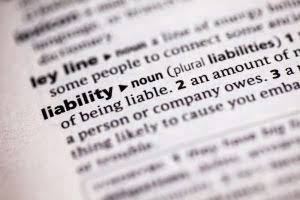Incremental Cost Overview, Calculation, Uses and Benefits

When a factory considers installing pollution control equipment, the incremental cost may seem high. However, the long-term benefit—cleaner air, healthier communities—justifies the investment. In project management, scope creep—the gradual expansion of project requirements—can derail timelines and budgets. When stakeholders propose additional features, project managers assess their incremental cost against the project’s overall budget. By comparing these incremental costs, the company can select the route that minimizes overall expenses while meeting delivery deadlines.
When to Use Incremental Cost Analysis

It includes relevant and significant costs that exert a material impact on production cost and product pricing in the long run. They can include the price of crude oil, electricity, any essential raw material, etc. https://www.bookstime.com/ The calculation of incremental cost shows a change in costs as production expands. Incremental costs help to determine the profit maximization point for a company or when marginal costs equal marginal revenues.
What Is the Benefit of Incremental Analysis?

Austin has been working with Ernst & Young for over four years, starting as a senior consultant before being promoted to a manager. At EY, he focuses on strategy, process and operations improvement, and business transformation consulting services focused on health provider, payer, and public health organizations. Austin specializes in the health industry but supports clients across multiple industries.
Benefits of Incremental Cost Analysis
Forecast LRIC is evident on the income statement where revenues, cost of goods sold, and operational expenses will be affected, which impacts the overall long-term profitability of the company. It also helps a firm decide whether to manufacture a good or purchase it elsewhere. Incremental cost is the total cost incurred due to an additional unit of product incremental costs are always being produced. Getting all relevant information about your operational expenses lets you know whether you are in the right financial state to cover additional production costs before starting any project. Incremental cost analysis will save you from engaging in unprofitable business ventures that can ultimately damage your financial state.
- This could mean more deliveries from vendors or even more training costs for employees.
- As this cost is related to the production of additional units, they are not known to be incurred if the production would not increase.
- From a financial perspective, incorporating incremental cost enables businesses to evaluate the cost-effectiveness of various options.
- Only the relevant incremental costs that can be directly tied to the business segment are considered when evaluating the profitability of a business segment.
- In summary, incremental cost isn’t a mere line item on a balance sheet; it’s a compass guiding us through the labyrinth of choices.
- Analyzing production volumes and the incremental costs can help companies achieve economies of scale to optimize production.
Incremental cash flow is the additional operating cash flow that an organization receives from taking on a new project. A positive incremental cash flow means that the company’s cash flow will increase with the acceptance of the project. A positive incremental cash flow is a good indication that an organization should invest in a project.
- It also helps a firm decide whether to manufacture a good or purchase it elsewhere.
- When you get an understanding of the additional costs of increasing the overall production of a product, it serves to be useful in the determination of the retail price of the particular product.
- Companies look to analyze the incremental costs of production to maximize production levels and profitability.
- At the same time, fixed costs are known to be difficult to serve a single business segment.
- Incremental analysis is a problem-solving method that applies accounting information—with a focus on costs—to strategic decision-making.
- Costs are determined differently by each organization according to its overhead cost structure.
- Incremental cost is usually computed by manufacturing entities as a process in short-term decision-making.
Often, it is more cost-efficient to outsource from a specialty company instead of doing it from scratch. While the company is able to make a profit on this special order, the company must consider the ramifications of operating at full capacity. The company is not operating at capacity and will not be required to invest in equipment or overtime to accept any special order that it may receive. Then, a special order arrives requesting the purchase of 15 items at $225 each. For example, in the case of a restaurant that is only allowed to seat twenty-five people due to local regulations, increasing capacity by just one person may necessitate incurring construction costs.
Therefore, for these 2,000 additional units, the incremental manufacturing cost per unit of product will be an average of $20 ($40,000 divided by 2,000 units). The reason for the relatively small incremental cost per unit is due to the cost behavior of certain costs. For example, when the 2,000 additional units are manufactured most fixed costs will not change in total although a few fixed costs could increase.
How Does Understanding Incremental Costs Help Companies?
Incorporating incremental cost in business strategies can bring numerous benefits and enhance decision-making processes. By considering incremental cost, businesses can gain valuable insights into the true cost of producing additional units or implementing new projects. This allows for a more accurate assessment of profitability and helps in making informed decisions. When it comes to decision making and cost-benefit analysis, understanding the concept of incremental cost is crucial. Incremental cost refers to the change in total cost that occurs as a result of producing or consuming one additional unit of a good or service. It helps businesses and individuals make informed choices by considering the additional costs incurred and the potential benefits gained.

Incremental Cost: How to Calculate and Use It for Decision Making and Cost Benefit Analysis

